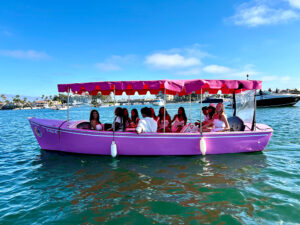Introduction
Boating can be a fun and relaxing activity for the whole family, including your pets. Whether you’re heading out for a day on the water or planning a longer trip, bringing your furry friend along can enhance the experience. However, just like humans, pets need to be kept safe and comfortable on a boat. Understanding the basics of pet-friendly boating is essential for ensuring a smooth and enjoyable experience for everyone on board.
In this guide, we’ll explore the key tips for safely boating with your pets, from choosing the right safety gear to keeping your pet calm on the water. Whether you have a curious dog or a laid-back cat, these tips will help make your boating adventure both safe and enjoyable for you and your pet.
Let’s dive into the essentials of pet-friendly boating, so you and your furry companions can sail smoothly together.
Choose the Right Life Jacket for Your Pet
One of the most important pieces of equipment for pet-friendly boating is a **pet life jacket**. Even if your pet is a strong swimmer, unexpected accidents or choppy waters can make it difficult for them to stay afloat. A well-fitted life jacket ensures that your pet stays buoyant and visible in the water, giving you peace of mind.
When choosing a life jacket, make sure it’s specifically designed for pets and fits snugly without restricting movement. Look for jackets with handles on the back, which make it easier to lift your pet back onto the boat if they fall overboard. Bright colors or jackets with reflective strips are also great for visibility.
Tip: Before heading out on the water, let your pet wear the life jacket on dry land to get used to it. This will make them more comfortable when they’re actually on the boat.
Train Your Pet for Boating
If your pet has never been on a boat before, it’s a good idea to introduce them gradually. Start by bringing your pet onto the boat while it’s docked or on land to let them explore the space. This allows them to get familiar with the environment without the added stress of movement or water.
Once your pet seems comfortable, you can take short trips in calm waters. Keep the trips brief at first and observe how your pet reacts to the boat’s motion. Some pets may need more time to adjust, while others will take to it naturally. Positive reinforcement with treats and praise can also help make the experience enjoyable for your pet.
Tip: Pay attention to signs of stress, such as panting, pacing, or whining, and be ready to cut the trip short if your pet seems uncomfortable.
Pack Pet Essentials
Just like you pack essentials for yourself, your pet will need a few must-have items while boating. Start with **fresh water** and a **water bowl**—your pet should stay hydrated, especially if it’s hot. Never let your pet drink from the sea, lake, or river water, as it could contain harmful bacteria or chemicals.
Bring your pet’s **food** and **treats** for long outings, and be sure to have a **first aid kit** that includes items specifically for pets, such as bandages, antiseptic wipes, and tweezers. Additionally, pack **waste bags** to clean up after your pet while on the boat or when you dock.
Tip: Don’t forget to bring a leash and harness, as some docks or marinas may require pets to be on a leash when onshore.
Create a Safe Space for Your Pet
It’s important to designate a safe space on the boat for your pet, where they can relax and feel secure. This area should be free from hazards like loose ropes or sharp objects. If your boat is large enough, bring a **pet bed** or blanket that your pet is familiar with to make them feel more at home.
For smaller pets, a **carrier** can be a good option for keeping them safe during rough waters or while docking. Make sure this area is shaded to protect your pet from sun exposure, and check frequently to ensure they aren’t getting too hot or too cold.
Tip: Keep your pet’s paws in mind, as boat surfaces can become hot in the sun. A mat or blanket can help prevent their paws from burning on deck.
Ensure Proper Hydration and Shade
Being out on the water under the sun can make pets quickly overheated. It’s crucial to provide plenty of **fresh water** and make sure there is **shade** available for your pet to cool off. Keep an eye on them for signs of dehydration, such as excessive panting, drooling, or lethargy.
If your boat doesn’t have a natural shaded area, you can create one using a portable sunshade or umbrella. Avoid keeping your pet in direct sunlight for long periods, and offer them water frequently throughout the trip.
Tip: Bring a portable, collapsible water bowl for easy access to drinking water during your boating adventure.
Keep Your Pet Safe from Overboard Falls
While boating, it’s important to keep an eye on your pet and make sure they don’t accidentally fall overboard. Some pets may get curious and lean over the edge, while others might get excited and jump into the water. Make sure your pet is always wearing their **life jacket**, and consider using a **harness and leash** to keep them close when moving around the boat.
If your pet does fall overboard, stay calm and use the handle on their life jacket to guide them back to the boat. Having a plan in place for how to retrieve your pet in case of an emergency can help prevent accidents.
Tip: Practice emergency drills with your pet on how to get them safely back onto the boat in case they do go overboard.
Be Aware of Temperature Changes
Boating environments can present extreme temperature changes, from hot sun exposure to cooler winds over the water. Keep your pet comfortable by adjusting their environment as needed. On hot days, provide access to shade, and on cooler days, bring along a **pet jacket or blanket** to keep them warm.
Monitor your pet’s behavior and body language to ensure they aren’t becoming too hot or too cold. Always have water available and take breaks to let your pet stretch and get some fresh air, especially during longer outings.
Tip: Pay attention to the weather forecast before your trip, and plan ahead with the right gear for your pet to keep them safe from temperature extremes.
Keep Your Pet’s Identification Up to Date
In case of an emergency where your pet gets lost, having up-to-date **identification** is crucial. Make sure your pet’s collar has an **ID tag** with your current contact information, and consider having your pet **microchipped** for extra security.
It’s also a good idea to bring along a recent photo of your pet in case you need to search for them. While it’s unlikely your pet will get lost while boating, taking these precautions will help you be prepared for the unexpected.
Tip: Use a waterproof collar and ID tag to ensure your pet’s information stays readable, even if they get wet.
Be Aware of Wildlife and Other Hazards
While boating, your pet may encounter new sights and smells that could be distracting or even dangerous. Be mindful of **wildlife**, such as birds, fish, or even dolphins, that could excite your pet and cause them to behave unpredictably. Additionally, be cautious of sharp rocks or debris in the water that could harm your pet.
If you’re boating in a new area, familiarize yourself with any local hazards, such as strong currents, jellyfish, or other potential risks. Keeping your pet close and under supervision will help ensure their safety.
Tip: Always keep your pet on a leash or within a secure area of the boat when approaching unfamiliar wildlife or hazards.
Plan Pet-Friendly Stops
If your boating trip involves multiple stops, make sure they are **pet-friendly** locations. Not all marinas, docks, or beaches allow pets, so plan ahead to find places where your furry friend is welcome. Look for parks or waterfront areas with open space where your pet can stretch their legs, go for a walk, or even take a swim.
When you stop, ensure your pet has access to fresh water and a shaded area to rest. Taking breaks will help keep your pet happy and comfortable throughout the trip.
Tip: Research pet-friendly marinas and stops before your trip to avoid any surprises and ensure a smooth sailing experience.
Conclusion
Boating with your pet can be a wonderful experience, but it requires some extra planning and attention to ensure their safety and comfort. From choosing the right life jacket to keeping them cool and hydrated, following these pet-friendly boating tips will help you and your furry companion enjoy a stress-free day on the water.
By being prepared and taking the necessary precautions, you can create lasting memories with your pet, whether you’re cruising through calm waters or exploring new shores together. So, grab your pet’s gear, hop on the boat, and set sail for your next adventure!
Excited for an adventure with us or have a question? Call us at: (949) 675-8433 Book Your Ride with us: Click here to Book




